
WPC Wall Panels: Durability, Maintenance & Longevity Explained

A deep dive into why WPC is redefining interior and exterior decoration materials
What Are WPC Wall Panels, Anyway?
Walk into a modern home, a bustling office, or even a trendy café, and you might notice walls that feel different—sturdy yet lightweight, sleek yet warm, and surprisingly resistant to the wear and tear of daily life. Chances are, those walls are clad in WPC wall panels. Short for Wood-Plastic Composite, WPC is a blend of natural wood fibers, recycled plastic, and additives that come together to create a material that marries the best of both worlds: the aesthetic appeal of wood and the durability of plastic.
As interior decoration materials evolve, WPC has emerged as a favorite among homeowners, designers, and contractors alike. Unlike traditional options that force a trade-off between looks and longevity, WPC wall panels offer a rare balance—making them a go-to choice for those who refuse to compromise. But what exactly makes them stand out? Let's break down their durability, maintenance needs, and lifespan to understand why they're becoming a staple in both residential and commercial projects.
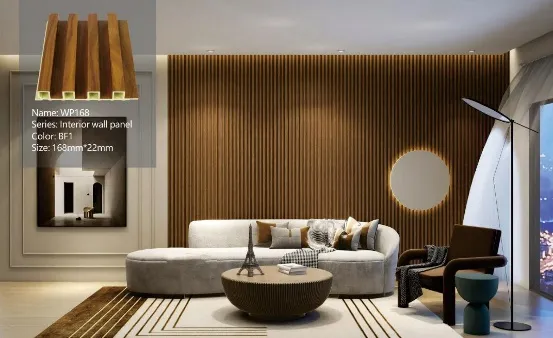
Durability: Built to Withstand the Test of Time
Durability isn't just about how tough a material is—it's about how well it holds up against the elements, daily use, and even the occasional accident. WPC wall panels excel here, thanks to their unique composition.
At their core, WPC panels are engineered to resist some of the biggest enemies of traditional wall materials: moisture, pests, and impact. Let's start with moisture. Unlike solid wood, which swells or rots when exposed to humidity, WPC's plastic component acts as a barrier, preventing water from seeping in. That's why you'll often find WPC used in bathrooms, kitchens, and basements—areas where moisture is a constant concern. In regions like Saudi Arabia, where humidity levels can spike, local wpc wall panel suppliers have seen a surge in demand, as homeowners and businesses seek materials that can handle the climate without warping or deteriorating.
Pests are another common headache with wood-based materials. Termites, carpenter ants, and other insects can turn a beautiful wall into a hollow shell in no time. But WPC? It's practically invisible to them. The plastic in the composite doesn't attract bugs, and the wood fibers are treated to resist infestations. For anyone who's dealt with the cost and stress of termite damage, this alone makes WPC a game-changer.
Then there's impact resistance. Kids running around, furniture being moved, or even the occasional stray basketball—walls take a beating. WPC panels are designed to absorb shocks without cracking or denting. In fact, many manufacturers subject their panels to rigorous testing, dropping heavy objects or simulating years of wear to ensure they hold up. The result? A wall that stays looking new, even in high-traffic areas like hallways or playrooms.
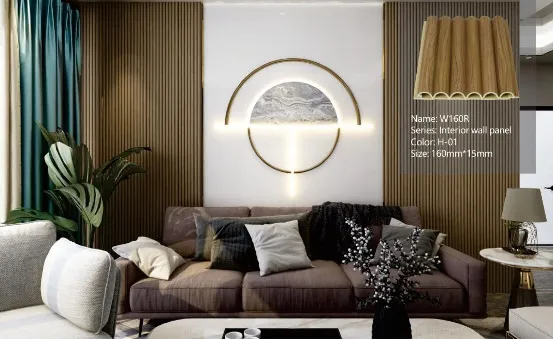
Maintenance: Simple Care for Busy Lives
Let's be honest: No one wants to spend weekends maintaining their walls. Traditional materials often demand constant attention—wood needs polishing, paint chips require touch-ups, and drywall is prone to cracks that need patching. WPC wall panels, though? They're practically low-maintenance royalty.
Cleaning them is a breeze. Most of the time, a quick wipe with a damp cloth and mild soap is all it takes to remove dust, fingerprints, or spills. Unlike porous materials like stone or unprocessed wood, WPC doesn't absorb stains, so even coffee spills or ink marks can be wiped away without leaving a trace. For tougher grime, a soft-bristle brush works wonders—no harsh chemicals or specialized cleaners needed.
What about fading? Many wall materials lose their color over time, especially when exposed to sunlight. WPC panels, however, are often treated with UV inhibitors that slow down fading. This makes them suitable for rooms with large windows or even covered outdoor spaces, like patios or sunrooms. Homeowners in sun-drenched areas (yes, we're looking at you, Saudi Arabia) will appreciate that their walls won't turn a dull shade of gray after a few years of sun exposure.
And here's the best part: WPC doesn't need painting, sealing, or refinishing. Once installed, it's good to go. No more scheduling expensive maintenance appointments or dealing with the fumes of fresh paint. For busy families or commercial spaces that can't afford downtime, this is a massive win.
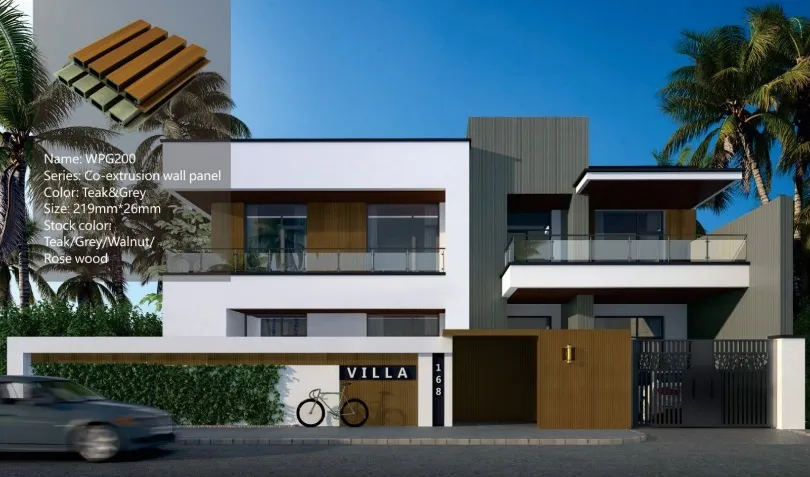
Longevity: How Long Do WPC Wall Panels Really Last?
Investing in wall materials is a long-term decision, so lifespan matters. How does WPC stack up? On average, well-installed WPC wall panels can last 15–25 years—sometimes even longer with proper care. That's decades of reliable performance, making them a cost-effective choice in the long run.
What affects their lifespan? Installation is key. A skilled contractor will ensure panels are properly secured, gaps are sealed, and moisture barriers (if needed) are in place. Cutting corners here can lead to issues like warping or loosening over time. That's why choosing a reputable wpc wall panel supplier is so important—they often work with trusted installers who know the ins and outs of the material.
Environmental conditions play a role too. While WPC handles moisture well, prolonged exposure to standing water (like in a flooded basement) can still cause damage. Similarly, extreme temperature fluctuations might affect the material, though most WPC formulations are designed to expand and contract minimally. For the most part, though, as long as they're used in their intended environment (interior walls, covered exteriors), they'll outlast many traditional options.
Don't just take our word for it. Talk to any wpc wall panel solutions provider, and they'll share stories of clients who installed WPC panels 10+ years ago and still rave about how "they look like the day we put them up." It's this kind of longevity that turns first-time buyers into lifelong fans.
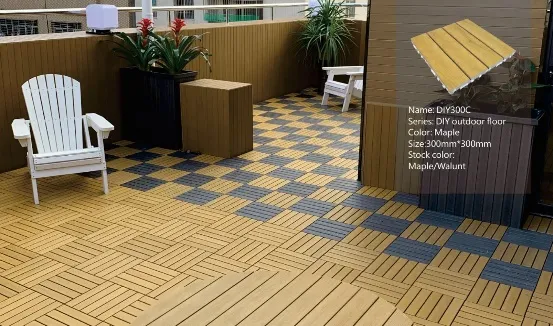
WPC vs. Other Wall Panels: How Do They Compare?
Curious how WPC stacks up against other popular wall panel options? Let's take a look at a side-by-side comparison with two common alternatives: MCM flexible cladding stone wall panels and bamboo charcoal board wall panels.
| Feature | WPC Wall Panels | MCM Flexible Cladding Stone | Bamboo Charcoal Board |
|---|---|---|---|
| Material Composition | Wood fiber + recycled plastic + additives | Stone powder + resin + fiberglass mesh | Bamboo fiber + charcoal powder + binders |
| Moisture Resistance | Excellent (resists rot and swelling) | Good (but may absorb moisture over time) | Moderate (needs sealing in humid areas) |
| Maintenance Needs | Low (wipe clean, no sealing required) | Moderate (occasional sealing needed) | Moderate (prone to scratches, needs gentle cleaning) |
| Expected Lifespan | 15–25 years | 10–15 years | 8–12 years |
| Best For | High-traffic areas, moisture-prone rooms, residential/commercial | Exterior facades, accent walls | Eco-conscious interiors, low-traffic spaces |
As you can see, WPC holds its own—offering better moisture resistance than bamboo charcoal and lower maintenance than MCM. It's a versatile option that works across a range of projects, from cozy homes to high-use commercial spaces.
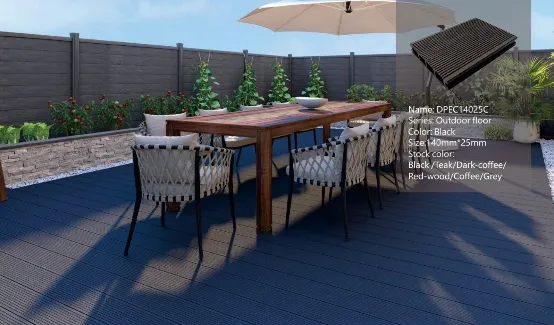
WPC Wall Panel Solutions: More Than Just Walls
WPC's appeal isn't limited to just walls, either. Many wpc wall panel suppliers also offer flooring solutions, making it easy to create cohesive spaces where walls and floors complement each other perfectly. Imagine a living room with WPC walls and matching WPC flooring—no more clashing textures or colors, just a seamless, polished look.
Commercial projects love WPC too. Restaurants use them for accent walls that withstand spills and frequent cleaning, while offices appreciate their sound-dampening properties (yes, WPC can help reduce echo in busy workspaces). Even schools and hospitals are starting to take notice, though for specialized environments like these, some may opt for Class A fireproof materials. Still, for most commercial settings, WPC's durability and low maintenance make it a standout choice.
And let's not forget customization. WPC wall panel solutions come in a wide range of finishes—wood grain, stone texture, solid colors, and even metallic hues. Whether you're going for a rustic cabin vibe or a futuristic minimalist look, there's a WPC panel to match. Some suppliers even offer custom designs, letting you bring your unique vision to life.
Why Choose a Reputable WPC Wall Panel Supplier?
Not all WPC panels are created equal. The quality can vary drastically depending on the supplier, so choosing the right one is key. Reputable wpc wall panel suppliers prioritize using high-quality raw materials, rigorous testing, and ethical manufacturing processes. They'll also offer warranties—often 10–15 years—which is a testament to their confidence in their product.
In regions like Saudi Arabia, where building standards are strict and climate conditions can be harsh, working with a local saudi arabia building materials supplier who specializes in WPC wall panel solutions is even more important. These suppliers understand the unique challenges of the local environment and can recommend products tailored to withstand high temperatures, humidity, or sandstorms.
So, what should you look for in a supplier? Transparency about materials, certifications (like ISO or fire safety ratings), and a track record of successful projects. Don't hesitate to ask for samples or references—any trustworthy supplier will be happy to oblige.
Final Thoughts: WPC—The Future of Wall Materials?
At the end of the day, WPC wall panels aren't just a trend—they're a smart investment in the spaces we live and work in. They offer durability without sacrificing style, low maintenance without cutting corners, and longevity that saves time and money in the long run. Whether you're renovating your home, designing a commercial space, or simply curious about the latest in interior decoration materials, WPC is worth a closer look.
So, the next time you're planning a project, remember: walls do more than just divide spaces—they shape how we experience them. With WPC, you're not just choosing a material; you're choosing walls that will stand by you, day in and day out, for years to come. And in a world where so much feels temporary, that's a rare and valuable thing.
Tags:
Recommend Products










